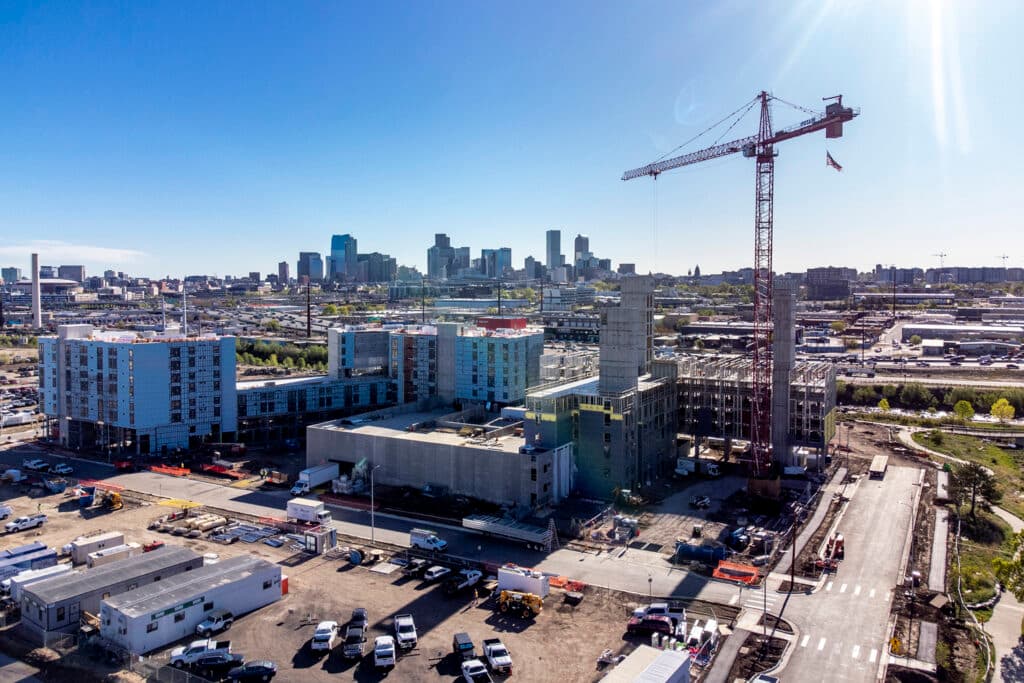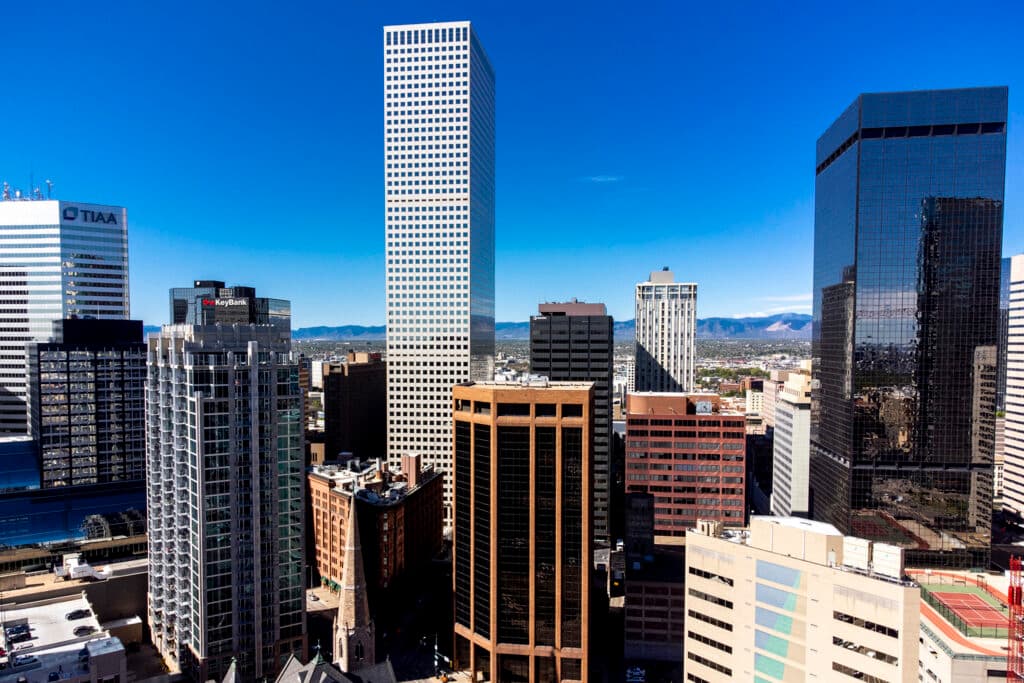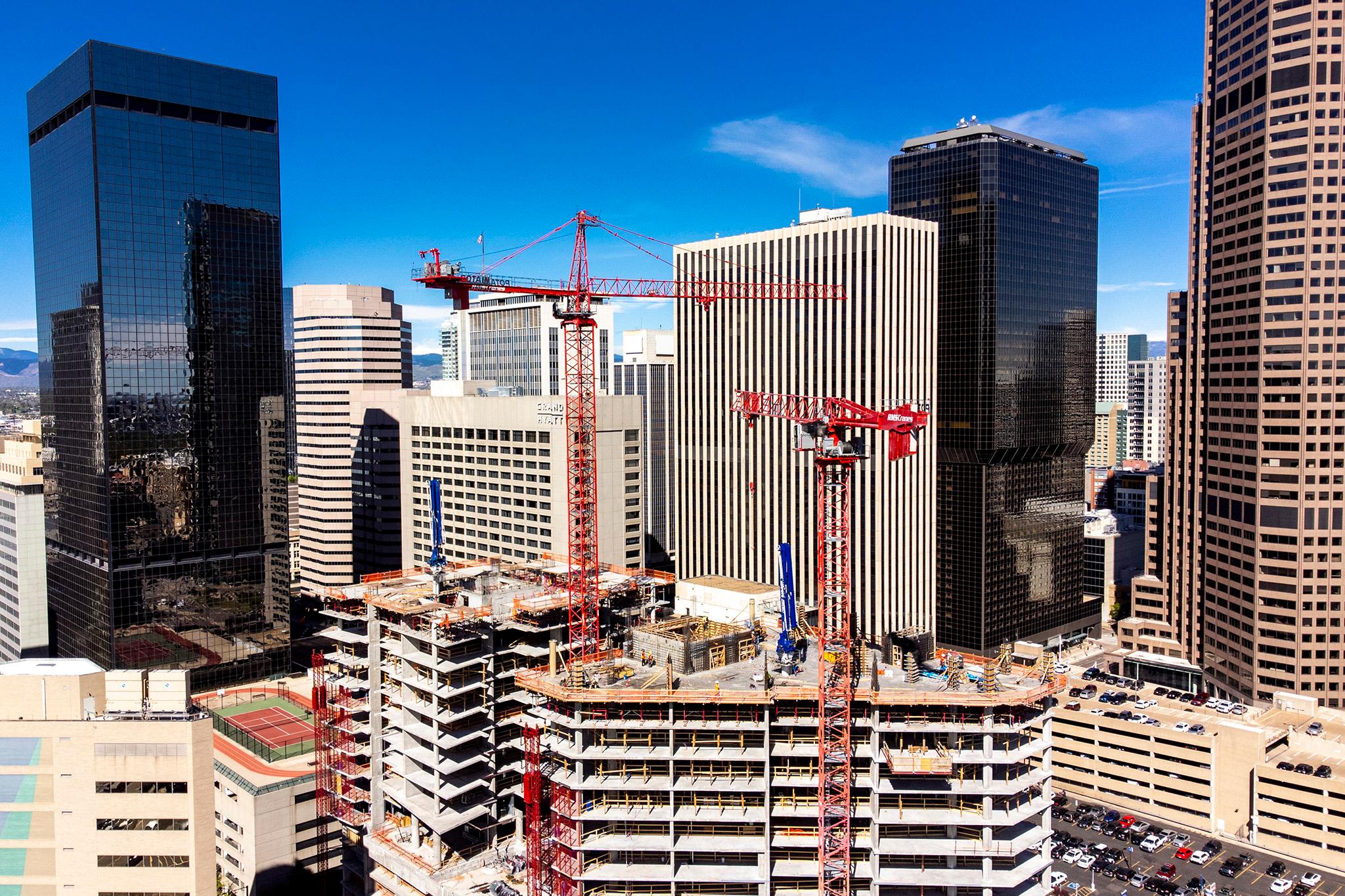Construction cranes have defined Denver’s skyline for more than a decade, offering a visual reminder of the city’s relentless growth.
New apartments, condos and office buildings have risen across town, from the River North Art District, the Golden Triangle, Union Station, Cherry Creek North, Loretto Heights, and Central Park to Sun Valley.
Today’s rising developments were born from yesterday’s plans, policies and investments.
“It takes some years to get from visioning to implementation to developers getting all of their funding stacks together,” explained Deirdre Oss, who oversees large development reviews with Community Planning and Development, the city’s planning department.
Investors and developers were bullish on Denver’s growth during most of Mayor Michael Hancock’s first two terms. But some developers' optimism has since dried up.
In just under two years, starting under Hancock’s last term and leading into current Mayor Mike Johnston’s first term, developers have submitted fewer plans for new multi-family residential buildings in Denver.
Some in the real estate industry caution that fewer proposals means that in five to ten years, there may no longer be massive cranes scattered across the skyline. Denver could see far fewer apartments and condos under construction. With fewer homes being built, home prices and rent would likely surge again.
How radical has the drop in new proposals been?
“In the City and County of Denver, there are currently 18,700 units under construction,” Scott Rathbun, head of Apartment Appraisers and Consultants, said. “They've broken ground. And once you break ground on a deal, you're gonna finish the deal.”
Most of those units will be delivered by 2027.
“We're gonna see a lot of cranes in the skyline in the City and County of Denver for the next three years,” he said.
Another 29,000 market-rate units and 2,900 subsidized units are going through the permitting pipeline, according to Rathbun.
All but 6,000 of those were proposed before the Expanding Housing Affordability rules went into effect on June 30, 2022. Those policies require that developers build more affordable housing every time they create a market-rate multifamily property. After they were in place, new proposals for market-rate housing plummeted in the city.

“We've had some macroeconomic impacts that have made it more difficult to develop apartments, to make deals pencil, to make deals feasible,” Rathbun said. “But the same story, the same significant difference between the pre-June 30, 2022 and the post-June 30, 2022, does not exist in any of the other six counties in the metro area.”
Some suburbs, he explained, have larger development pipelines from June 30, 2022, to now than they did before.
The one big difference between Denver and those counties was the passing of the Expanding Housing Affordability rules — a law intended to create more housing stock where people could actually afford to live.
But if the law slows down the creation of housing, it could backfire, suggests Rathbun.
“When we see the reduction of cranes in the next five years, we're also going to start to see rents skyrocket,” Rathbun said.
Why have proposals slowed down?
Demand for commercial real estate tanked during the COVID-19 pandemic. Nationally, interest rates have risen mightily. So have construction costs.
Companies building in the city have also been signaling they might move to places with fewer taxes and regulations.
Andrew Feinstein, one of the most active local developers in RiNo, says new development won’t happen if things don’t change.
“Cranes will become an extinct species if interest rates stay high, costs stay high, carrying costs stay high… and the regulatory environment remains challenging,” he wrote to Denverite.
Carrying costs include high property taxes and expensive insurance. The regulatory environment includes zoning restrictions, the time it takes the planning department to issue permits, and the Expanding Housing Affordability rules.

Drew Hamrick, the Senior Vice President of Government Affairs for the Apartment Association of Metro Denver, believes high interest rates and overregulation of market-rate developments will also make investors wary of funding local projects.
“If interest rates were to drop significantly, projects that don’t currently make sense become more attractive,” he said.
Developers are dependent on institutional investors to fund their properties, and for years, Colorado has been “a fairly attractive place to do that based on the demand for housing and the environment for building,” Hamrick said. “That environment is getting significantly worse.”
Policies like Expanding Housing Affordability, make it too expensive to develop market-rate housing, he said. To him, that explains the slowdown in new development proposals Community Planning and Development has seen since the policy began on June 30, 2023.
“The fact that nobody's applying for permits in Denver is a pretty good indication that in three years, the cranes that you're seeing today are going to be gone,” Hamrick said. “But that's not very indicative of what's going to happen in five years or 10 years because ultimately, the price of market-rate rental housing goes up when there's not enough of it.”
Despite skepticism from the private sector, city planners say the day of the crane is far from over.
Oss, of Community Planning and Development, is optimistic that more development is coming. Even as the big projects underway wrap up, new transformative projects are already in the works. She doesn’t see that changing over the next decade.
In part, this is because many massive projects could take a decade or more to complete, and these are slated to bring thousands of units of new housing to the city.
Massive central Denver mixed-use projects like the River Mile, the Ball Arena parking lot redevelopment and Burnham Yards will effectively expand the reach of Downtown Denver, more than doubling the city center in size.

Despite high interest rates and construction costs, there’s no sign that those projects are dead, though their rollout will be affected by sweeping economic conditions.
Cherry Creek West, Fox Park at the site of the old Denver Post printing press building, Denargo Market, and the expansion of the former site of the Gates Rubber Plant are also in the works
And Northeast Denver is also likely to experience an ongoing boom in construction.
Mayor Mike Johnston has committed to speeding up permitting times by 30% by the end of 2024. The hope: Make development easier and keep those cranes rising.
“I think it’s probably going to be a pretty consistent part of our skyline,” Oss said. “I think the locations where those pop up will change.”














